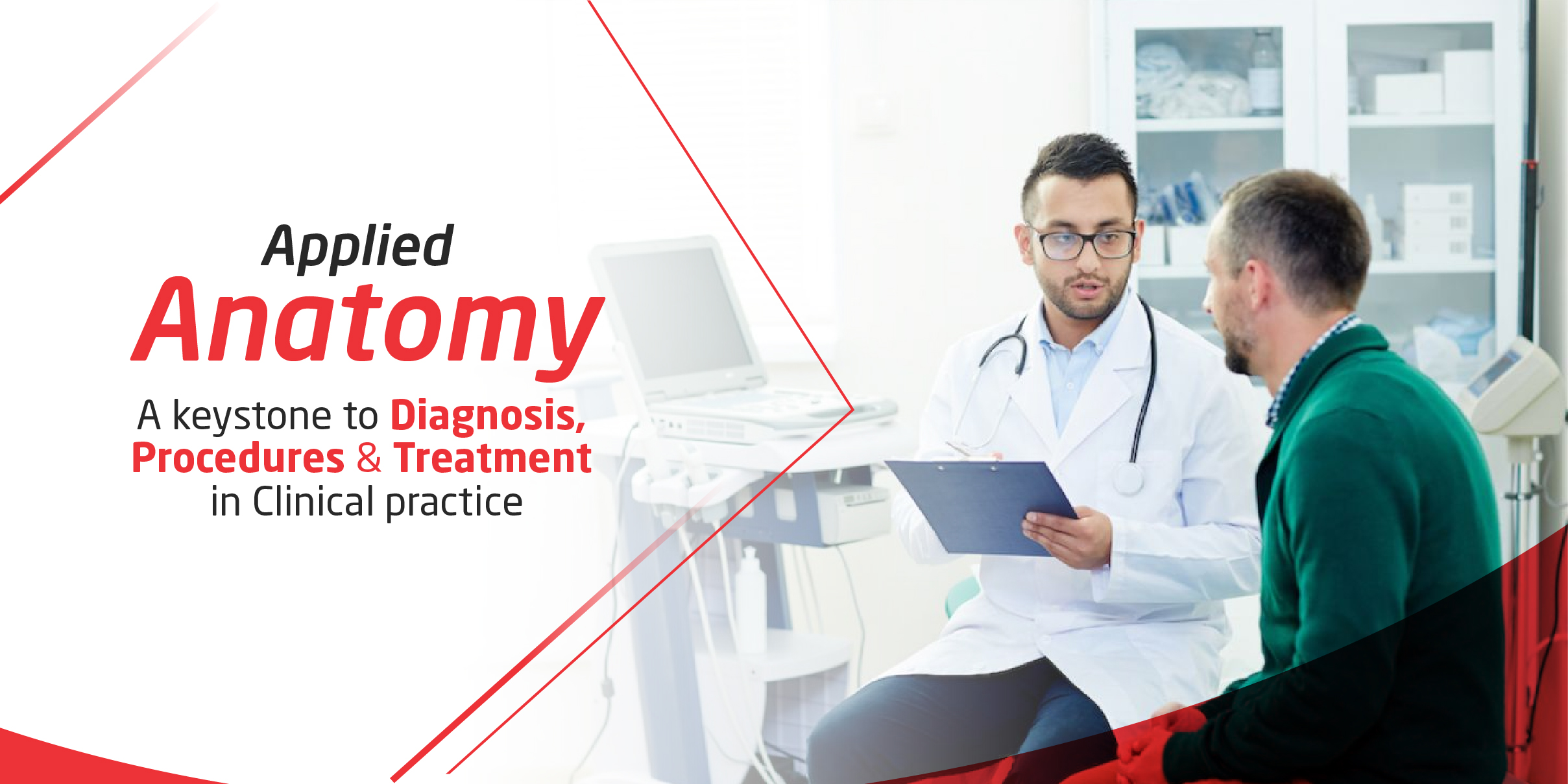
APPLIED ANATOMY/CLINICAL ANATOMY:
It is the practical application of anatomic knowledge in solving the clinical problems eg diagnosis and treatment or in devising a surgical solution of a disease process &applied to patient care.
A precise knowledge of applied anatomy/clinical anatomy is a keystone to the diagnosis of various diseases. Clinical Anatomy gives an exact information about the system & the organ/organs involved in a disease process.
Clinical anatomy covers anatomy in all its aspects - gross, histologic, developmental, and neurologic as applied to clinical practice; the application of anatomic principles to the solution of clinical problems and/or clinical observations.
The study of clinical anatomy differs from a typical anatomy course in that, it goes beyond simple identification of body parts and organs. Instead, students discuss and perform clinical and surgical procedures as a means to study anatomy. Egin a surgical procedure, using the knowledge of related applied anatomy, the smallest incision must be made by a surgeon followed by a bigger cut so he can see& approach the required target, without harming the surrounding important structures.
A clinician well versed with the knowledge of applied anatomy can perfom& interpret the specialized procedures like CT guided angiography, MRI& PET scan.
Most students realize that the knowledge of clinical anatomy improves their understanding of the anatomical basis for clinical examination. Anatomy must be taught and learned in such a way that it becomes clinically meaningful and is linked to the proficiency mandatory for new medical graduates. Another way to facilitate clinical anatomy instructions is to have regional anatomy taught by both anatomists as well as by clinicians. Thus, the practical aspect is stressed upon, starting from how anatomical knowledge is applied and working backward from the objectives to the factual details. This makes Anatomy much more relevant.
A Skilled Surgeon should is a good Anatomist first.
Skilled surgeons treat their patients by repair/removal/cutting/alteration/replacement of the diseased part/organ. The surgeon requires not only confidence, a sound knowledge of the organization of macro/microforms and structures and their shapes, sizes, and locations and the correct diagnosis of the disease, but also the anatomical relationship to the disease. Expertise and success in surgical procedures can be achieved by a precise and thorough understanding of human anatomy and diseases/traumas.
CLINICAL ANATOMY RELATED
DIAGNOSIS OF DISEASE
*Physical examination by palpation, percussion, and auscultation depends primarily on macro/microforms and structures, their shape, size, configuration, and location: the better the knowledge of anatomy, the greater the confidence of the doctor in diagnostic physical examination. For example
1. Applied anatomy of the nervous system is essential to be known by the medical practitioners to locate the lesions of CNS and interpret the disorders producing clinical symptoms.
2. Extra growth associated with organs, infection, and traumas (internal and external) provides an important indicator of the severity of the disease through anatomical changes.
3. The upper abdominal pain mostly occurs due to the involvement of gallbladder, stomach, duodenum, and pancreas; The central abdominal pain usually occurs due to the involvement of small bowel and kidneys;) The lower abdominal pain occurs due to involvement of urinary bladder, uterus, caecum, and sigmoid colon.
4.Pain in left arm& precordium as experienced in Angina pectoris/myocardial infarction can be explained by the knowledge of anatomy.
*CLINICAL ANATOMY RELATED TO ANESTHESIA
An Anesthetist is required to be thorough with the clinical anatomy of larynx & lung before starting general anesthesia.Similarly, a precise knowledge of the spinal cord & vertebral column is needed before undertaking lumbar puncture.
Concluding, there is a need to focus on moving from highly in-depth anatomical topics towards functionally and clinically significant topics, irrespective of the method of teaching. MCI in its ‘Vision 2015’ has also advocated integrated teaching. Integrated teaching of Anatomy incorporates the practical application of the knowledge of basic sciences thus helping students to become lifelong learners. Thus to be a good clinician, one must be a good anatomist.